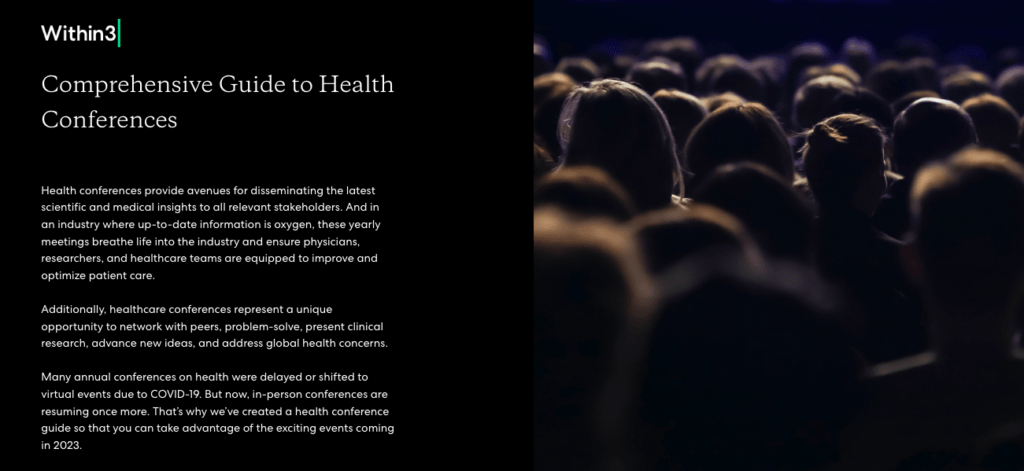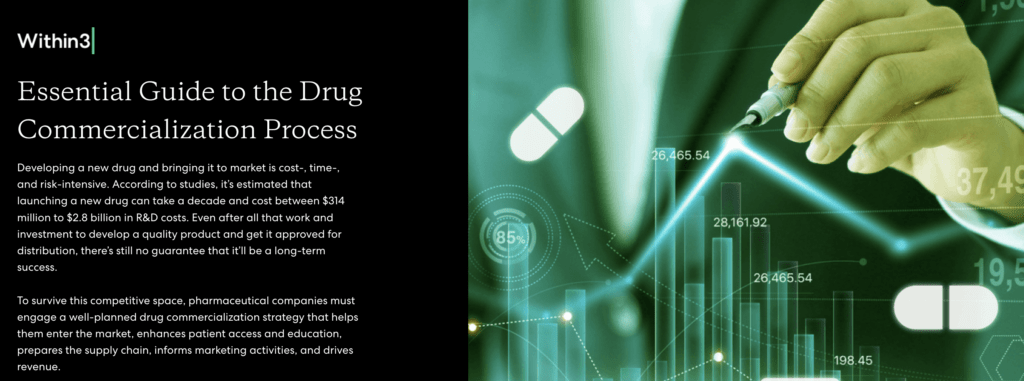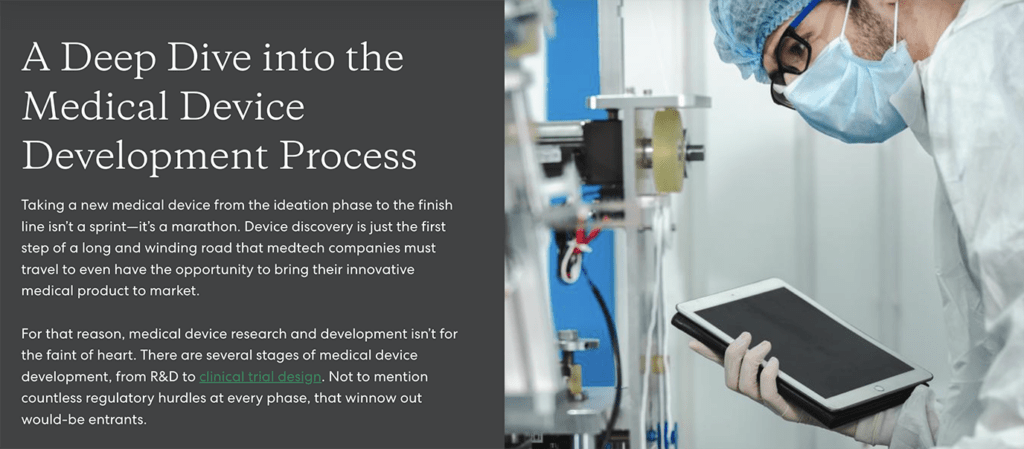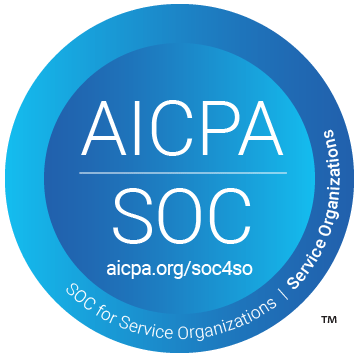Guide to real-world data vs real-world evidence

The two concepts are similar but distinct. Explore the differences and learn how they’re used.
Ultimate Guide to Healthcare Conferences

Health conferences provide avenues for disseminating the latest scientific and medical insights to stakeholders. And in an industry where up-to-date information is oxygen, these yearly meetings breathe life into the industry and ensure HCPs, researchers, and medical affairs teams are equipped to improve and optimize care.
Essential Guide to Drug Commercialization Process

To survive this competitive space, pharmaceutical companies must engage a well-planned drug commercialization strategy that helps them enter the market, enhances patient access and education, prepares the supply chain, informs marketing activities, and drives revenue.
A Deep Dive into the Medical Device Development Process

What does the medical device product development process entail? What are the medical device design components? How long does it take? And what are the challenges medtech companies must prepare for?


